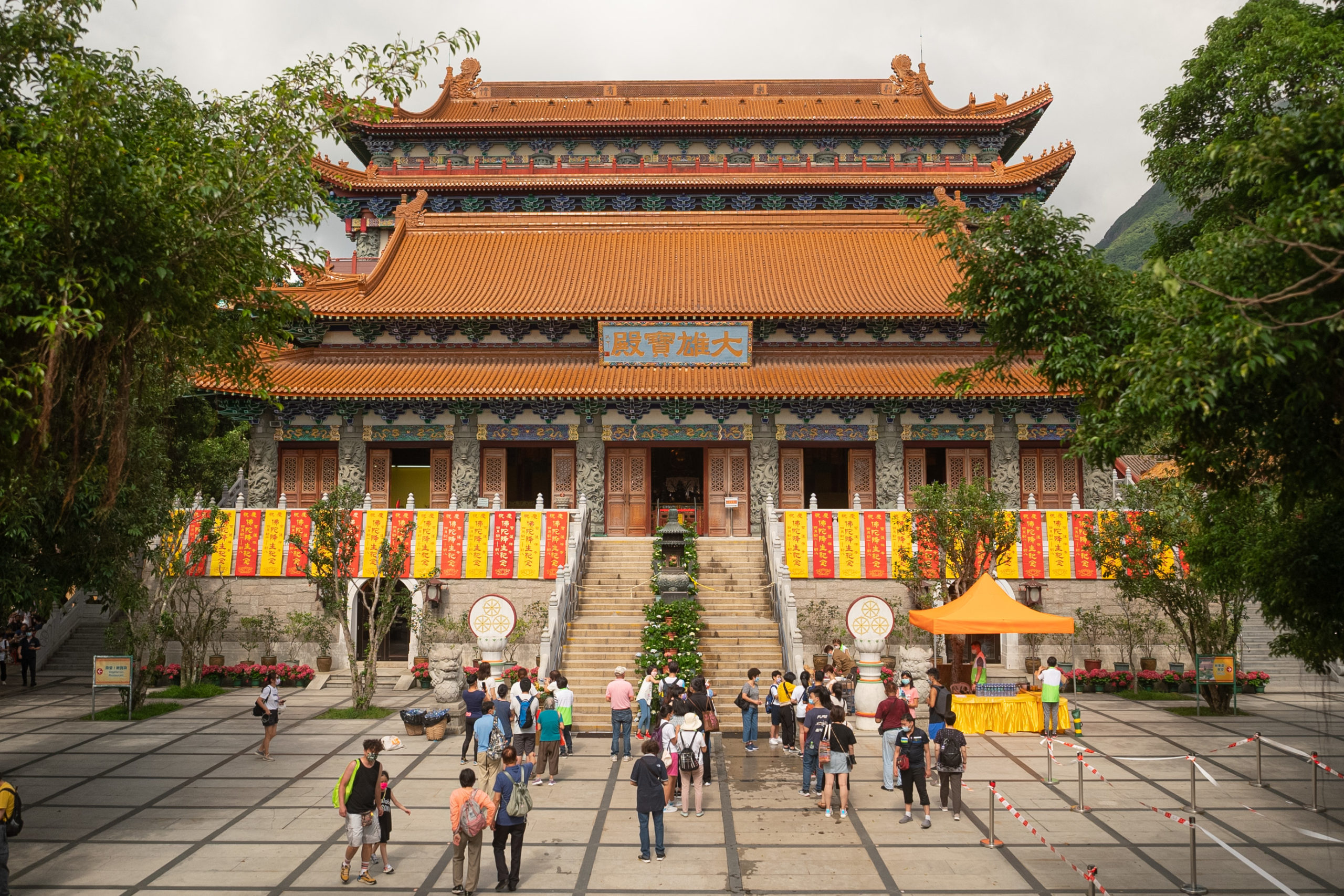You may read about The Big Buddha in your travel research, but probably not Po Lin Monastery, the temple complex adjacent to the Buddha which is of paramount importance. Let’s zoom in on these splendid structures!
The Beginning of Po Lin Monastery
The story of the legendary shrine began with a small hut. Nearly a century ago, three monks were enchanted by the fresh air and serenity in Ngong Ping, decided to practice and meditate here. They started cutting grass, farming and building a stone house so-called “Big Thatched Hut” (大茅蓬), known as the origin of Po Lin Monastery.
Their way of life continued over a decade until 1924. Another monk from China planned to visit a different temple in Tung Chung, only to take the wrong boat and reached Tai O. He did not return but spontaneously went for a hike and the coincidence happened. He stumbled upon the three monks that resided in the enclosed mountain. They hit it off at first sight and thought it was fate that brought them together. So the three monks asked the Chinese monk to stay and take charge of the temple…
From 22.4 HKD to 1.4 billion
Nonetheless, the temple was very poor in the beginning. The abbot in 1950s reminisced that there was only as little as 22.4 HKD in the temple’s bank account. Combining insufficient capitals with a rising number of monks, the abbot decided to carry out a few reforms (one of which was tourism) to turn around the temple’s finance.
It came as a big success, especially after the erection of The Big Buddha & Ngong Ping 360 cable car. As of 2016, Po Lin Monastery has about HKD 1.4 billion worth of assets and annual income of HKD 140 million. The story gets better - the last abbot was a nephew of the original abbot. He took the abbot job after he failed both in becoming an actor and his marriage… go figure!
Traditional Chinese Design
Fascinating is the temple's design. Ranging from the entrance of San Men (Mountain Gate or phonetically “Three Gates”), to Bell Tower, Drum tower and Meditation Hall, the entire complex consists of tradition and wisdom. Passing through the courtyards is the Main Shrine Hall of Buddha where the dragon sculptures are worth an admiration. (This is very weird if you know anything about Chinese architecture: dragon & yellow is reserved ONLY for the emperor, using these combinations means the owner of the building wants to…)

The newest building, Grand Hall of Ten Thousand Buddhas, is also a highlight. Completed in 2014, the temple follows the design of the palace in Ming/Qing dynasty, which also showcases the ancient magnificence and simultaneously the classical art sense. Needless to say, more than 12,800 Buddha statues in different sizes displayed in the main hall have created a spiritual and ineffable ambiance.


As flamboyant as it is, we do not think the Po Lin Monastery stays true to a Buddhist temple. From dragon column to palace liked design, it reflects much more of a major attraction than a place of tranquility. We recommend a visit to Chi Lin Nunnery (志蓮淨苑) should you want to visit a proper Buddhist Temple in Hong Kong.









